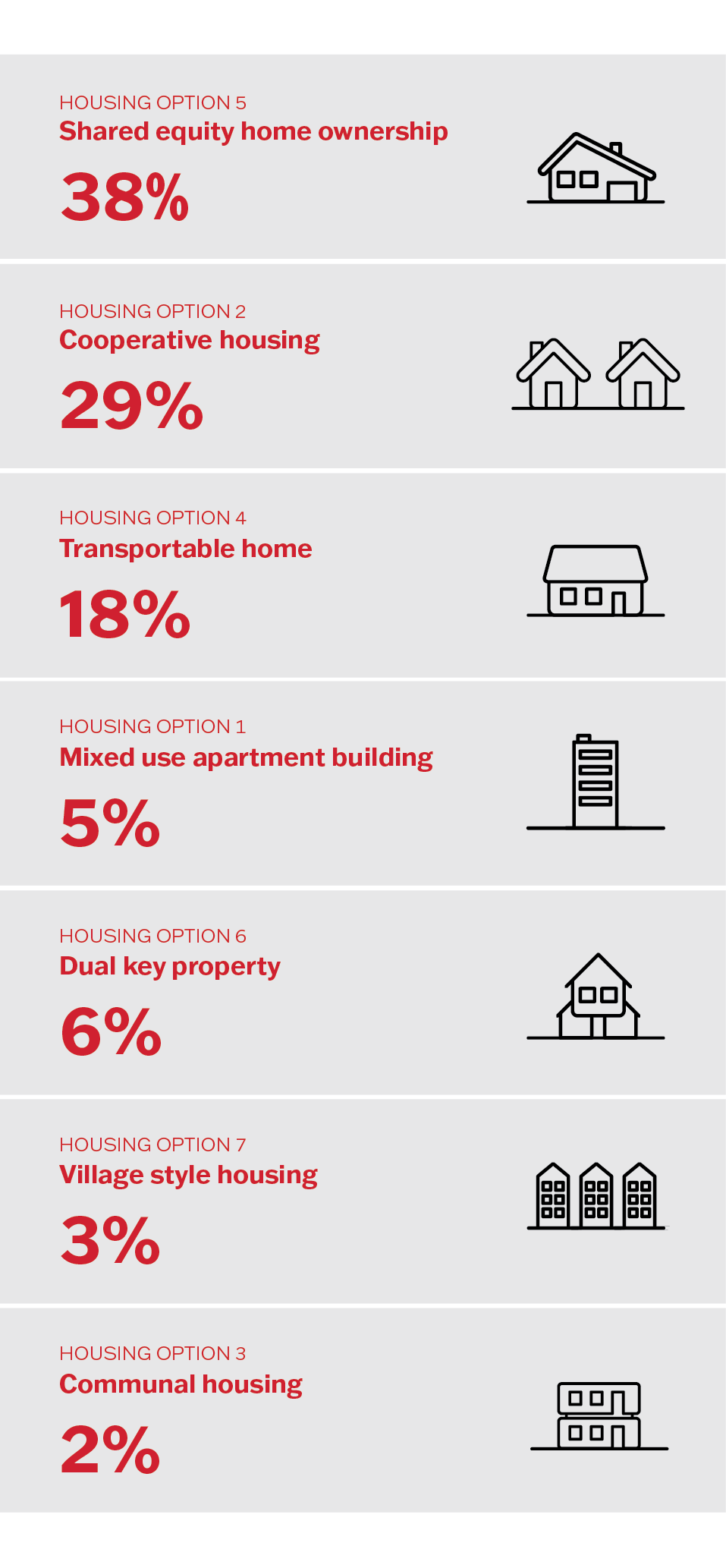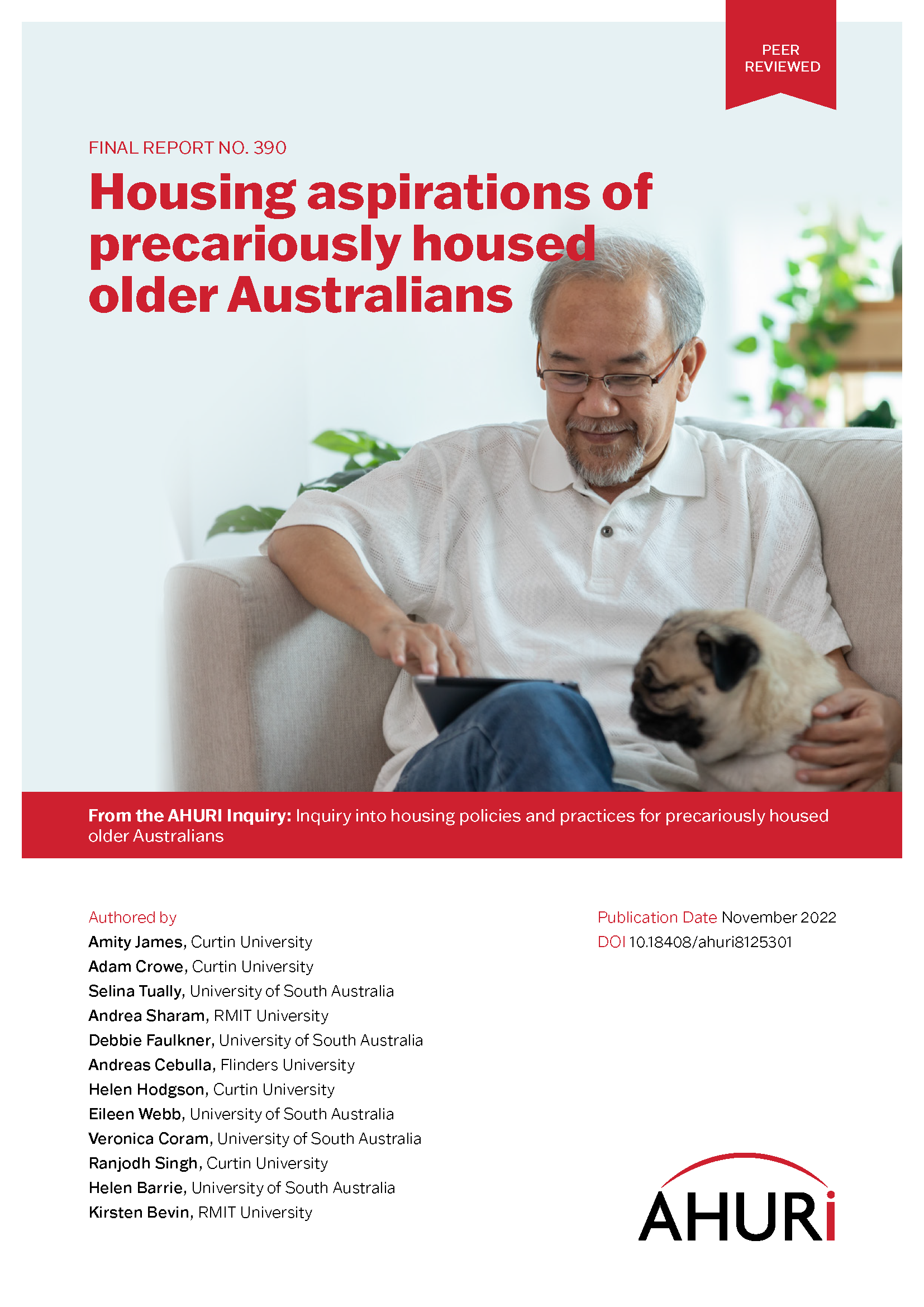
Alternative housing models needed for older Australians on low incomes
Information on appropriate and affordable housing alternatives that can help older Australians avoid ongoing housing stress or even homelessness is complex, fragmented and at times absent, and does not lead to effective decision making, new AHURI research finds.
10 Nov 2022
The research, ‘Housing aspirations of precariously housed older Australians’, undertaken for AHURI by researchers from Curtin University, University of South Australia, RMIT University and Flinders University, investigated older, low income households’ preferences for a range of alternative housing models and examined which would best meet their needs. Alternative housing models explored included a mixed use apartment building option, a cooperative housing option, a communal housing option, a transportable home option, a shared equity home ownership option, a dual key property option, a village-style housing option.
Lead researcher Associate Professor Amity James from Curtin University said older, low-income households were more likely to experience precarious housing, particularly if they were living in the private rental sector or if they entered retirement with a mortgage, and being able to understand their housing preferences would help to develop a market for alternative affordable housing options.
“Participants’ knowledge of alternative housing models was limited, which reflects the relative scarcity of these options and the dominance of mainstream models, especially home ownership, social rental housing and private rental,” Associate Professor James said.
“There is also limited information on the available options, how to access them, legalities and other information pertinent to decision making.”
Associate Professor James said in Australia, the supporting agencies that exist to help older people navigate their housing options have limitations and challenges.
“Obstacles, including language and cultural barriers, physical accessibility (for people with disability, for example), previous bad experiences, visual and hearing impairment, low literacy skills and low internet and digital literacy can all inhibit an individual’s ability to successfully navigate their housing options,” Associate Professor James said.
“For culturally and linguistically diverse older people, access and navigation processes can be even more difficult. Our research shows the need for centralised and comprehensive housing information to be delivered both online and in person.”
Internationally, a few agencies have established housing navigation ‘toolkits’ or similar information bundles, assisting people to identify suitable housing options. Often accessible in both online and print formats, housing navigation toolkits tend to use a questionnaire-type approach to generate a range of potential housing options and relevant sources to seek further information.
Associate Professor James explains that information is power, and for a marginalised group, information must be accessible to help people to navigate the complex housing system.
“Our research modelled seven alternative housing models, each with a unique combination of tenure, construction, location, social composition, shared space, environmentally sustainable and smart technology characteristics,” Associate Professor James said.
“We found three of the seven alternative housing models were substantially preferred by low income, older Australians, including a shared equity home ownership model, a cooperative housing model, and a transportable home model.
“All three alternative housing models met the short and long-term housing needs of the respondents and would also deliver benefits in terms of people’s non-shelter aspirations for home including independence, privacy, security of tenure, ability to have companion animals and room for friends, family or a carer to stay.”
The research also found the shared equity housing option was the most preferred of all housing options, with 67 per cent wanting to live in a separate house, 14 per cent in a townhouse or duplex and only nine per cent in an apartment.
Survey respondents expressed a strong liking for rights of ownership (84 per cent) or a long lease option (83 per cent). Housing options that included other tenure arrangements, such as shared governance and management (59 per cent) and land owned and retained by government (68 per cent), were considered less desirable.


